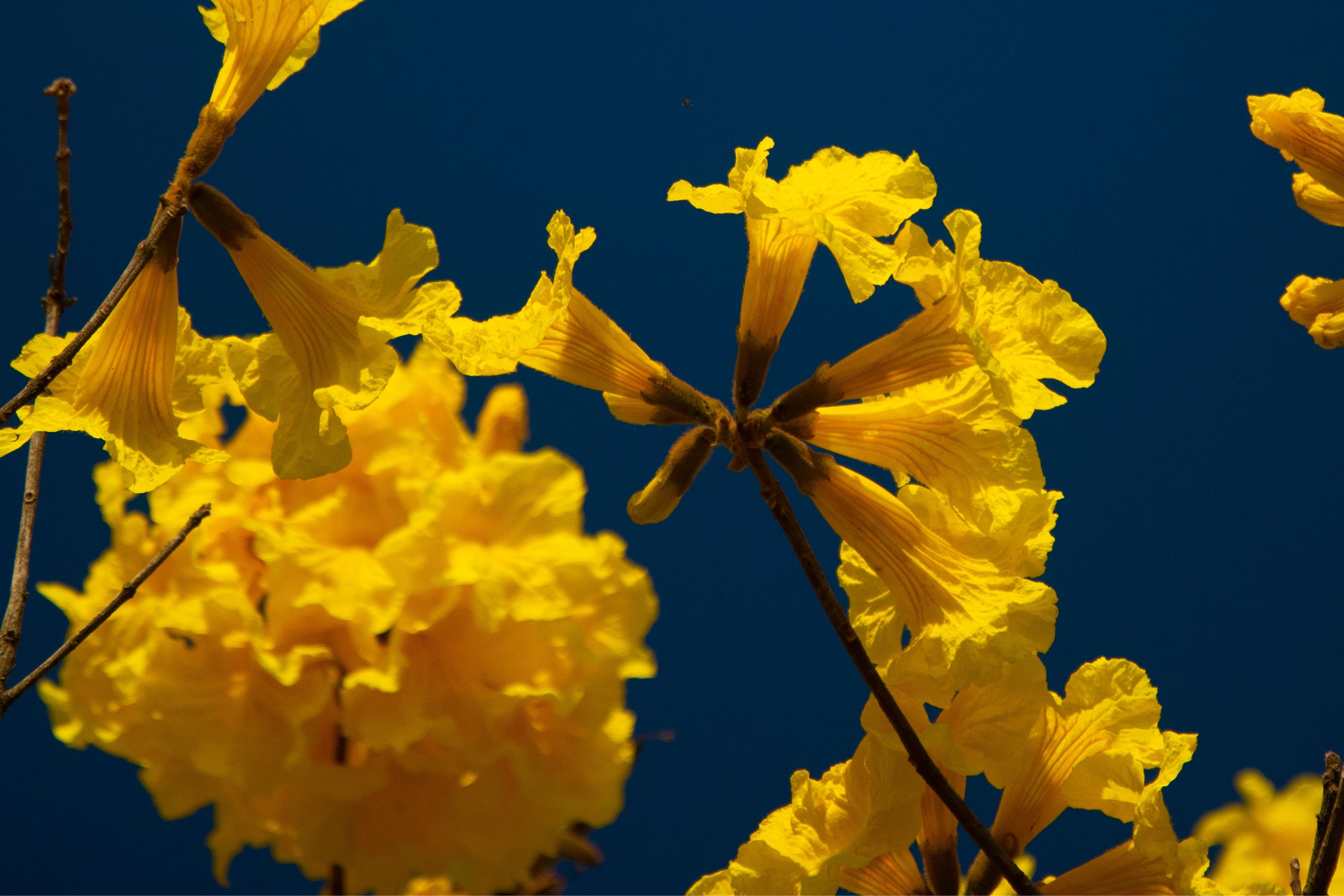Yellow lapacho
(Handroanthus serratifolius)

Description
Handroanthus serratifolius is a species of tree, commonly known as yellow lapacho, pau d'arco, yellow poui, yellow ipe, pau d'arco amarelo, or ipê-amarelo. It is a tree native to forests throughout Central and South America. This plant grows in the cerrado vegetation of Brazil, reaching up to French Guiana, Bolivia, Paraguay and Northern Argentina. It is one of the largest and strongest of tropical forest trees, growing up to 150 feet (46 m) tall while the base can be 4–7 feet (1.2–2.1 m) in diameter. The name Handroanthus was established in 1970,but was not generally accepted. In 1992, its species were included in Tabebuia in the most recent revision of that genus. Handroanthus was resurrected in 2007 when a comparison of DNA sequences by cladistic methods showed that Tabebuia, as then circumscribed, was not monophyletic. Handroanthus are indigenous from Central America to northern Argentina, Paraguay and Chile, with one species, Handroanthus billbergii, native to northern South America and the Antilles. Handroanthus are frequently cultivated far from their natural range, as ornamental trees, for their large and showy flowers. They easily become naturalized where introduced because their seeds are prolifically produced and widely scattered by the wind. Several species are important timber trees of the American tropics. Medicinal use has been reported, but its efficacy and side effects have not been well studied. The nectar of Handroanthus flowers is an important food source for several species of bees and hummingbirds. Mycosphaerella tabebuiae, a plant pathogenic sac fungus was first discovered on a Handroanthus tree, known at that time as Tabebuia. The taxonomy of Mycosphaerella is in much confusion and the recognition of this name is questionable. The genus Handroanthus was erected by Joáo Rodrigues de Mattos in 1970. It was named for the Brazilian botanist Oswaldo Handro. "Anthus" is derived from a Greek word for "flower". Most botanists at that time did not agree with the separation of Handroanthus from Tabebuia. Alwyn H. Gentry objected strenuously and warned against "succumbing to further paroxysms of unwarranted splitting".
Taxonomic tree:







